Research Group Management Ecology of Marine Macrophytes
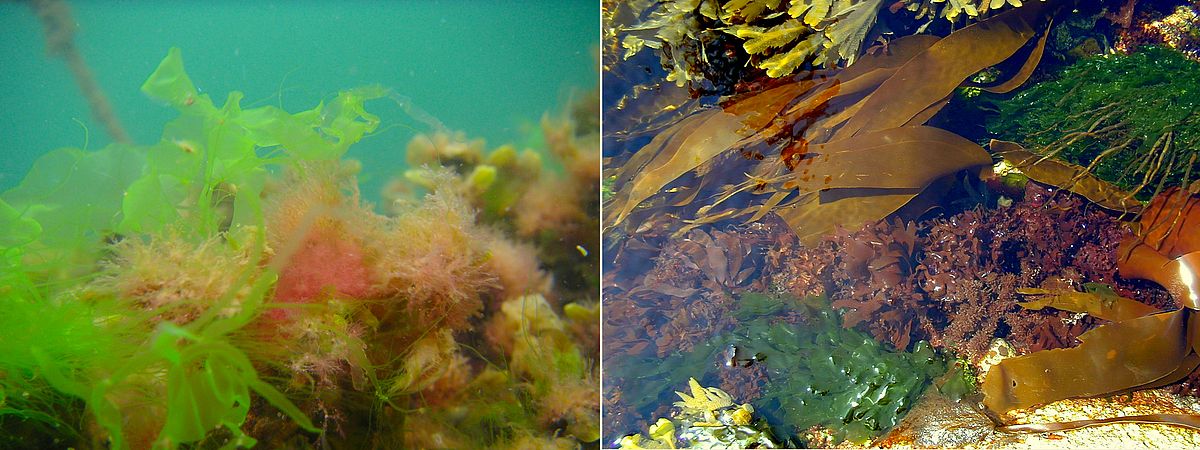
Macrophyte habitats need better management
Similar to forests, shrubs and perennial meadows on land, habitats formed by long-lived macrophytes are important components of the marine environment. Large stands of algae and seagrass meadows provide a permanent livelihood as sources of food, substrate, or oxygen for numerous other marine organisms on all coasts worldwide. In many countries, there is also a growing interest in the economic use of algae as a source of raw materials or food.
However, these habitats are increasingly under threat. Eutrophication, climate change, species introductions, and other changes in the marine environment have led to a decline in kelp forests and seagrass beds worldwide in recent decades. At the same time, an increase in short-lived, opportunistic, and often free-drifting macrophytes has been observed along many coasts, causing ecological and economic problems when they form large aggregations of dying and decaying biomass.
Better management of macrophyte habitats is clearly needed: The multiple ecological challenges posed by environmental changes and land-use interests must be addressed in the future in a way that restores, rather than further reduces, the ecosystem services provided by algal and seagrass beds.
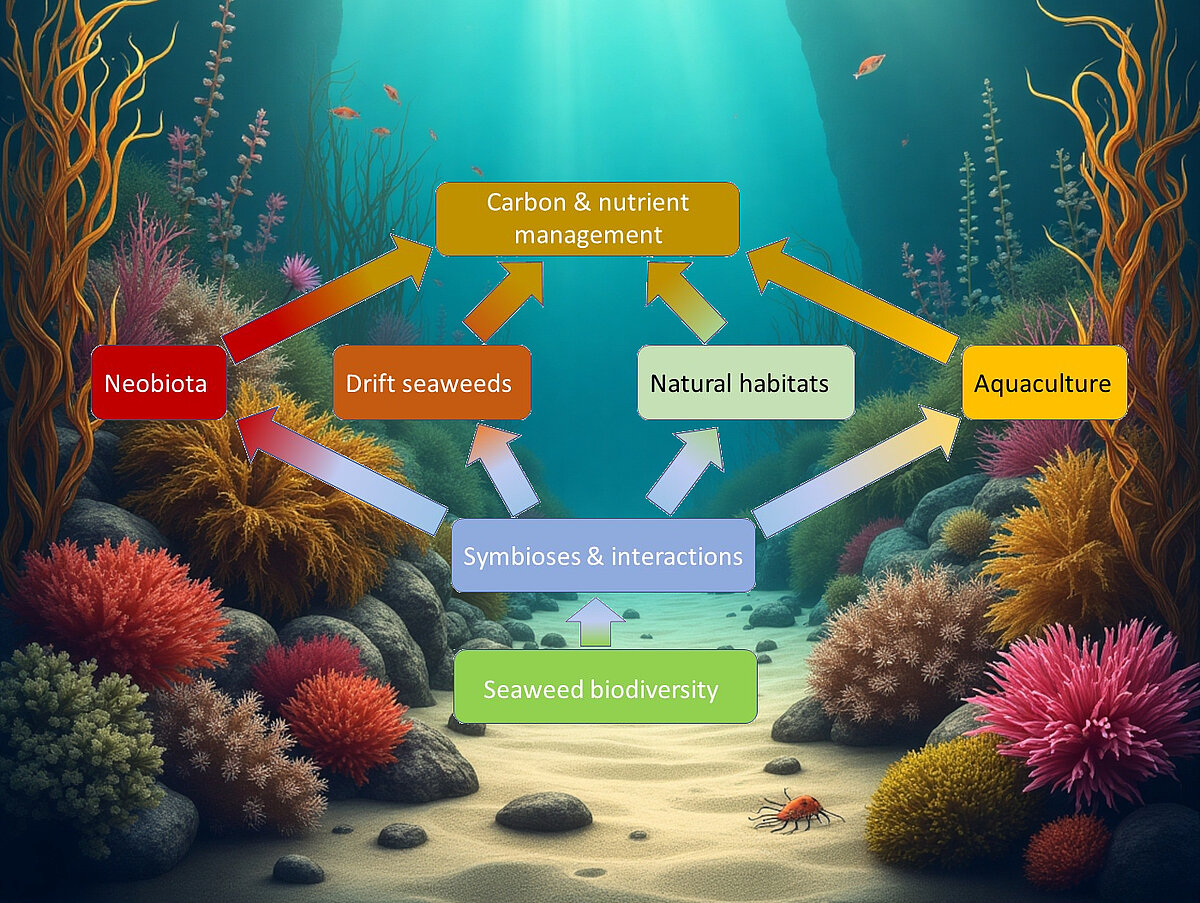
Our concept: The basis of all habitats is their species inventory. This biodiversity determines which interactions between organisms are possible. Such interactions - symbioses, food web relationships, competition - significantly influence the function of habitats and their resilience to environmental changes. Not only natural, but also artificially created macrophyte habitats (i.e., seaweed aquaculture) are subject to these interdependencies. Successful habitat management that prevents undesirable phenomena such as mass development of drift seaweeds or bioinvasions and promotes desirable ecosystem services such as long-term carbon storage therefore requires a much better understanding of such interactions.
Biodiversity
Since the beginning of the 19th century, German coasts have been taxonomically studied. However, the inventory of algal species is still not fully understood and for many other coasts around the world, our knowledge is even more limited. Genetic methods have opened up new perspectives. However, the resulting genetic species concepts are often very different from classical morphological concepts. Some examples from our work:
We recently developed a methodology for the detection of Ulva and related green seaweeds in environmental samples.

The SeaKey Baltic project was launched in 2024 and develops a scientific identification key for Seaweeds of the German Baltic Sea, covering brown red and green algae, including Charophytes. They key will consist of a webkey and downloadable and printable documents. For an example see the corresponding SeaKey for German North Sea algae of our collaboration partners at AWI. Stay tuned!
Symbioses and interactions
Changes in macrophyte habitats - targeted management actions as well as uncontrolled environmental changes - usually lead to shifts in the structure of the species communities associated with the algae. As a result, pathogens, herbivores, epiphytic organisms, or competitors may become prevalent or symbionts may decline. In all these cases, the algae may be permanently damaged. A detailed understanding of the interactions between algae and these accompanying organisms is therefore necessary if management measures are to be successful.

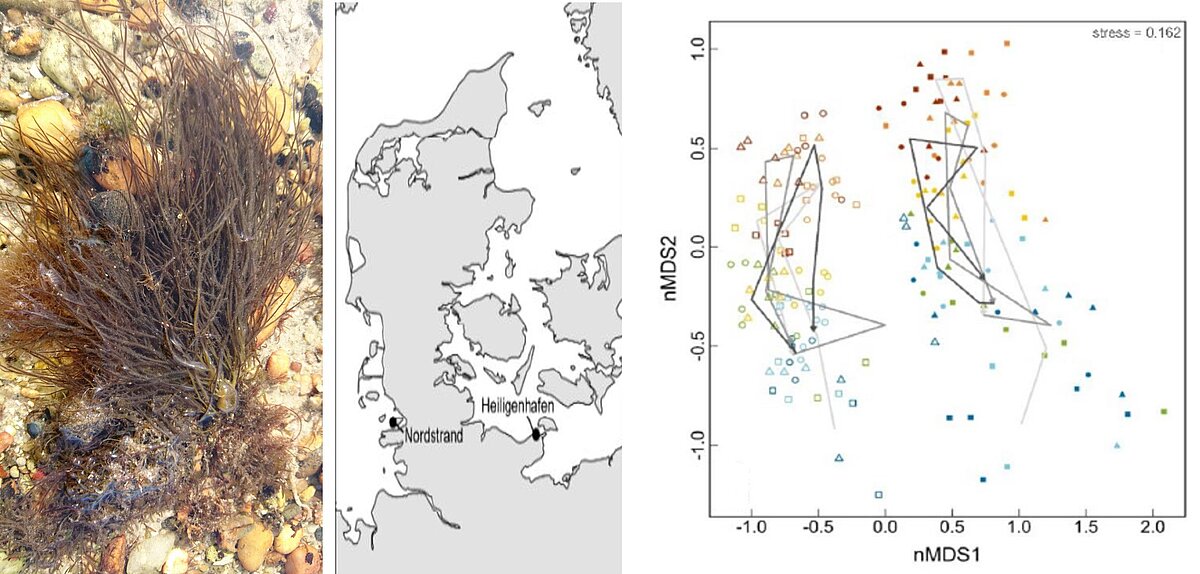
The bacterial communities associated with the alga Gracilaria vermiculophylla differ locally, but each population shows seasonally recurring patterns in species composition. In this study, microbiomes of algae in two populations in Nordstrand (Wadden Sea) and Heiligenhafen (Baltic Sea) were sampled every two months over three years. Distances between samples in the figure on the right reflect relative similarities in bacterial composition. It can be seen that the bacterial communities of both populations differ and that within each population there is an oscillation between a summer aspect (red symbols) and a winter aspect (blue symbols), as indicated by the marked transects. See C.M. Mudlaff et al. (2024) Seasonal Cycles in a Seaweed Holobiont: A Multiyear Time Series Reveals Repetitive Microbial Shifts and Core Taxa.
Neobiota
Driven by global change and intensified transport, more and more marine species are spreading into new habitats, where they interact with native species and possibly displace them. If we want to control invasive species, we need to recognise them at a very early stage. On the other hand, invasive species - which usually travel as stowaways - are subject to extreme selection pressure. By understanding their stress resilience, we may be able to gain insights that can be used for the future management of algal communities under global change.
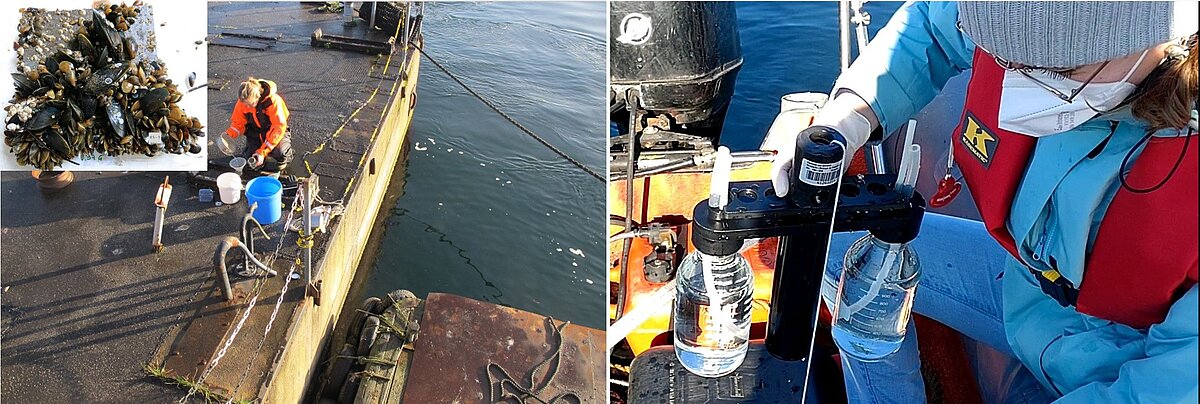
For several years, we have been involved in the extended rapid assessment survey (eRAS) of neobiota on the Schleswig-Holstein Baltic Sea coast. Every year, sediment and hard substrate samples are taken in larger ports and fouling panels exposed for this purpose are inspected (left hand). More recently, we have been investigating whether this labour-intensive method could be replaced or supplemented by analyses of environmental DNA (eDNA, right hand). eDNA is present in traces in seawater and can be extracted and sequenced, which then allows conclusions to be drawn about the organisms present in the sampled habitat. However, numerous methodological adjustments are required: to date, there are no DNA markers that can be used to identify all marine organisms (see also above in the section on biodiversity). DNA can degrade or drift, and the method is sensitive to contamination.
Gracilaria vermiculophylla...
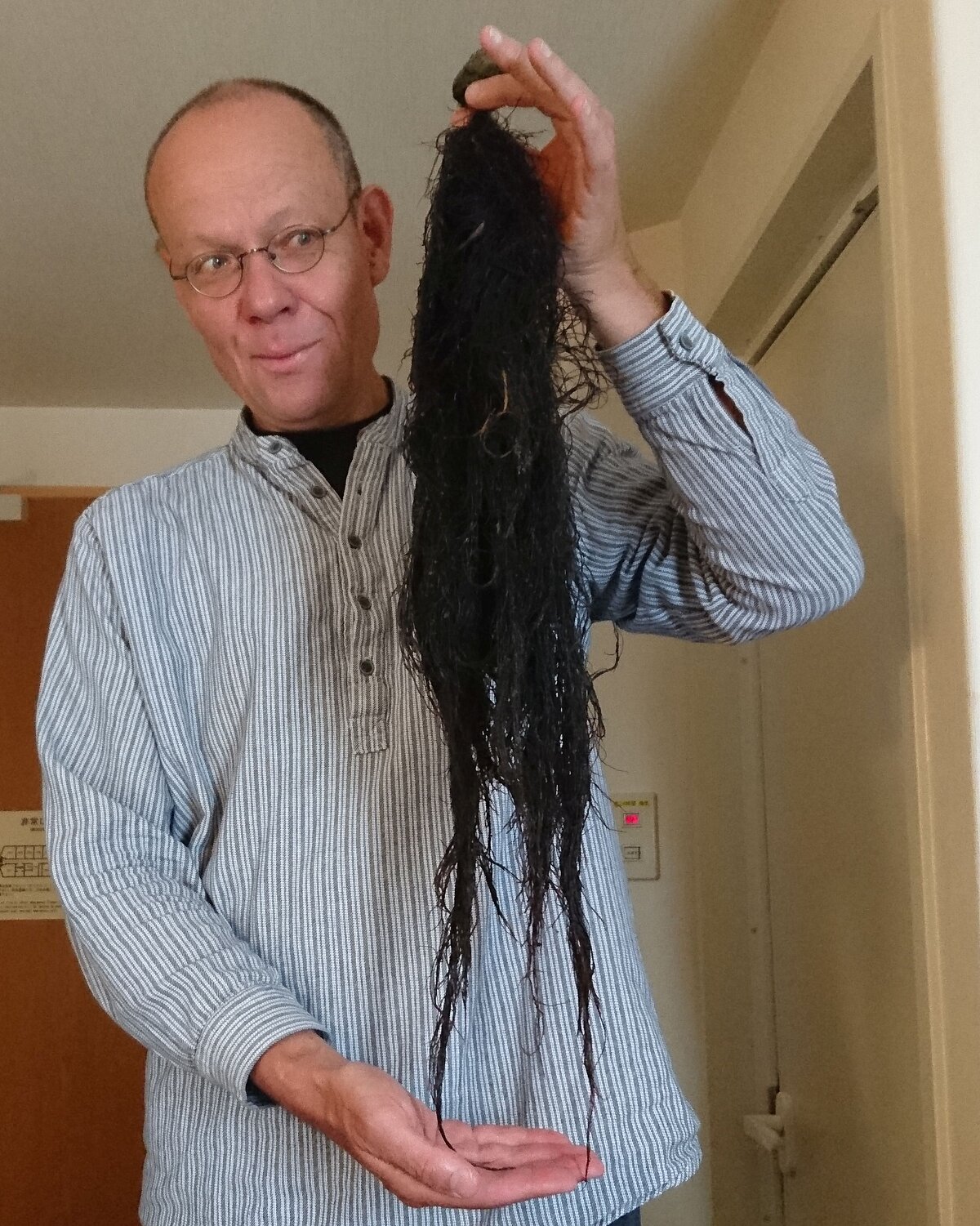
...originates from East Asia and has reached numerous coastlines in the northern hemisphere in recent decades. As we could show in common garden experiments,
(1) invasive individuals of the species constitutively express more heat shock proteins, which makes them less sensitive to warming than native populations =>publication,
(2) invasive individuals are more defended against consumers =>publication
and contain higher concentrations of the feeding deterrent prostaglandin =>publication,
(3) invasive individuals are better defended against epiphytes and epibionts =>publication,
(4) invasive individuals are better defended against microbial pathogens =>publication,
(5) invasive individuals are better able to control the associated microorganisms on which they depend in symbiotic relationships => publication, and
(6) invasive individuals are also better able to establish functional relationships with unfamiliar microorganisms =>publication.
So during its invasion history, this model seaweed invader has been repeatedly selected for stress resistance...
Drift seaweeds
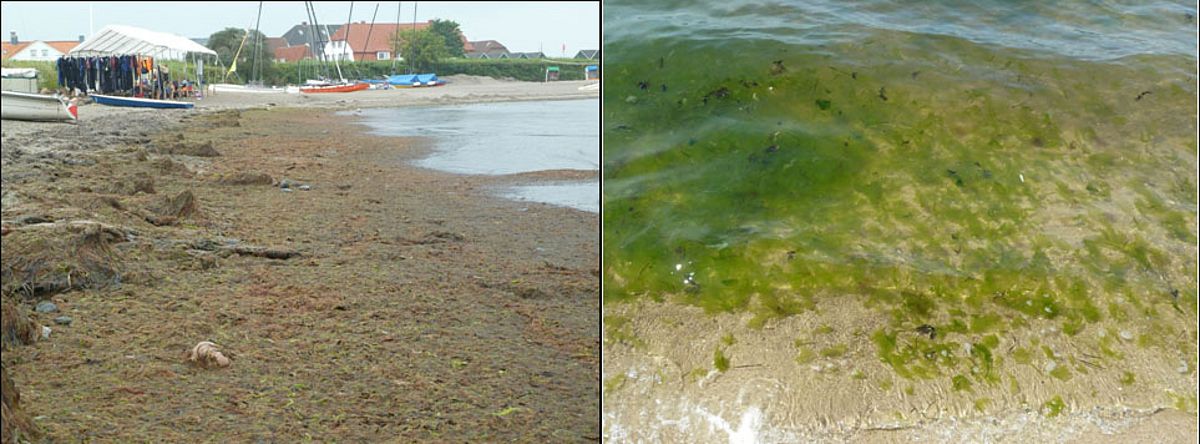
As a result of increased nutrient inputs into the sea and climatic changes, drifting algae are increasingly developing. Such drifting macrophytes were already part of the appearance of the Baltic Sea when it was still almost pristine, but in recent decades there have been significant shifts in the species composition. Nutrient opportunists are now more dominant and such species have a greater potential to cause disturbance. If drifting algal biomass reaches deeper zones of the ocean, it could make important contributions to carbon sequestration there.
In co-operation with partners at the Netherland's Institute for Sea Research in Yerseke, we are investigating in flume experiments how various macrophytes drift, with the aim of developing models that allow more accurate predictions about the fate of drift algal biomass.
Seaweed aquaculture
Marine algae are particularly efficient at absorbing carbon dioxide and utilising it for growth. This means that algae farms can help combat the localised effects of ocean acidification. Seaweed also fixes nitrogen and phosphorus and can help to reduce nutrient levels in coastal waters. Seaweed farming is currently the fastest growing sector of aquaculture. However, the industry is still in the development stage, and technologies we develop today can be critical to the environmental and economic sustainability of future transformative changes in ocean utilisation.
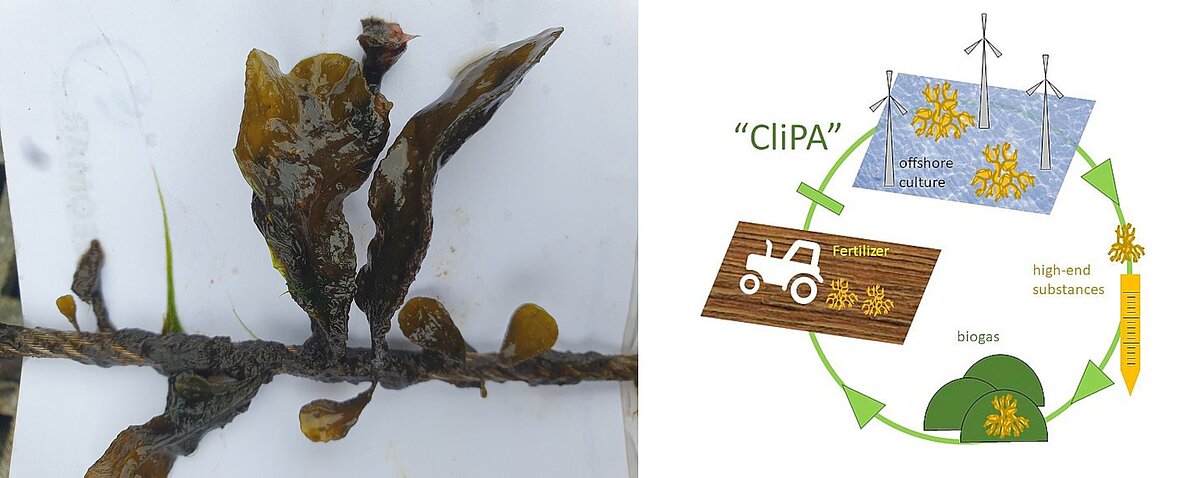
As part of the DBU-founded project CLIPA we investigate in collaboration with partners at the universities of Rostock and Kiel whether seaweed can be cultivated on the foundations of offshore wind turbines in the Baltic Sea. These foundations are ecologically problematic structures from the point of view of marine nature conservation, but are necessary for sustainable energy production. The project thus aims to achieve dual utilisation of offshore wind turbines already built in the Baltic Sea. If successful, the water quality can be improved, as seaweed removes nutrients from the Baltic Sea as it grows. After harvesting, it is to be used via a value chain for raw materials and biogas and the fermentation residue as a mineral-rich fertiliser substitute in agriculture. The projects requires domestication of seaweeds suitable for cultivation in the brackish Baltic Sea environment and targets in particular bladder wrack (Fucus vesiculosus). For more information please see here.
Team
To get more Information move cursor on persons and click for personal website.

Christian Lieberum
Scientist

Mamie Souadou Diop
DAAD-fellow

Lisa
Kattenhorn
Scientist
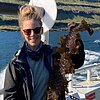
Sophie Koch
Doctoral student
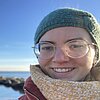
Nele
Wiedemann
MSc-student

Ivana Lukic
MSc-student
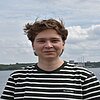
Maxim Shaporin
BSc-student
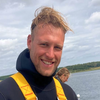
Marten Robbert
BSc-student








